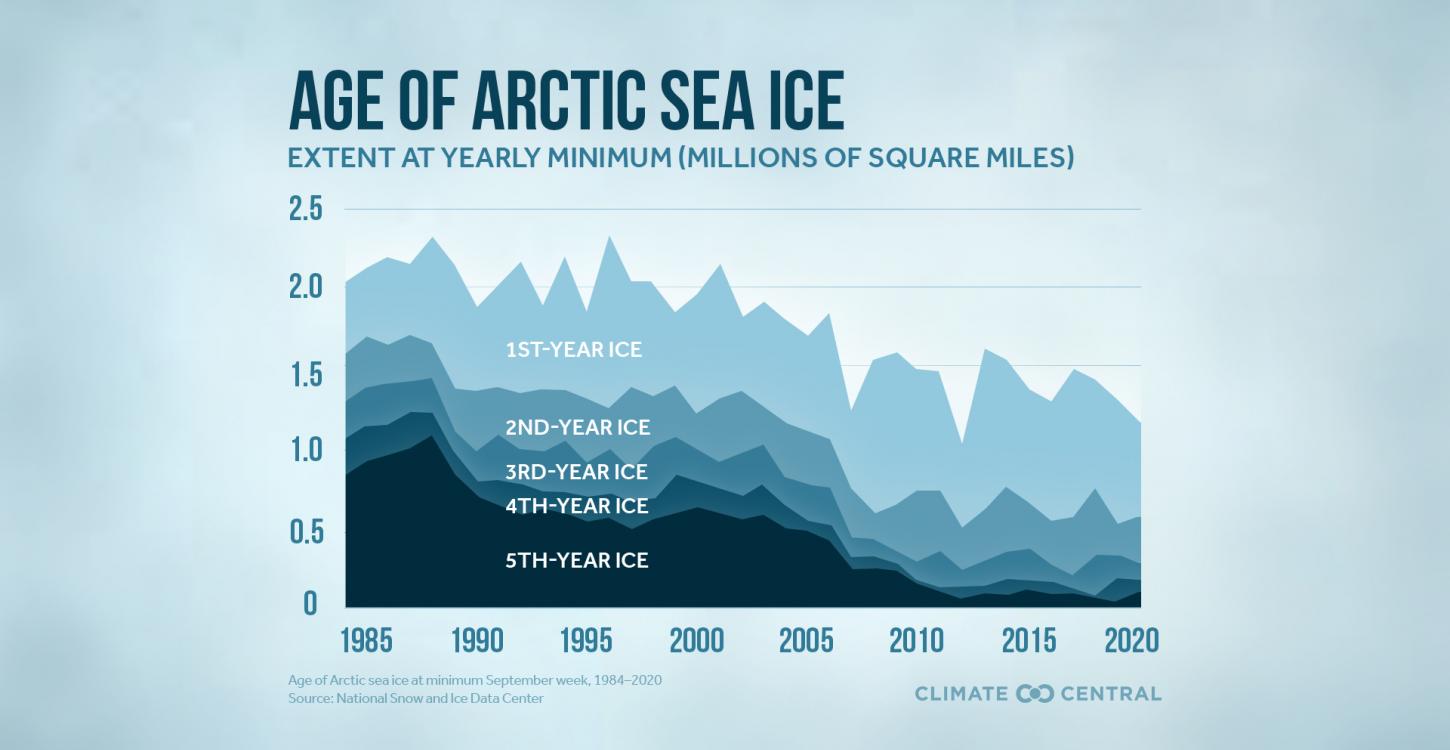
Photo credit: Age of Arctic Sea Ice at Minimum September week, 1984 to 2020, Source - National Snow and Ice Data Center
Climate Change Is Not Just About Warming Temperatures
September 28, 2021
As we begin week three of our climate change series, we want to discuss the term ‘global warming’ and how this has shaped worldwide understanding of climate change. While globally our temperatures are rising, causing unprecedented ice melting, flooding, fires, and the like, there is so much more to climate change. What is becoming clear is that weather is changing, causing deadly storms and events, both in areas where they are commonly seen, but also in places they have never occurred before. Temperatures are staying constant in places, causing heat domes, areas that typically did not see snow are experiencing it, and most alarmingly, wildlife are suffering mass die-offs, struggling to find food, and moving out of areas they have been in for hundreds, if not thousands, of years.
As we continue to warm, permafrost continues to melt which has some implications for the mining sector. To deal with the by-products that are created during the mining process, the waste created after the minerals are extracted has typically been stored underground within the permafrost to keep the waste frozen and inaccessible to humans, wildlife, and water sources. As the permafrost melts, this can cause issues with the waste melting and possibly contaminating the surrounding water bodies, soils, and ultimately, food for wildlife and humans.
Additionally, there are numerous microbes and bacteria that have been frozen in the permafrost for thousands of years; if melting continues, these can be released to the environment and atmosphere, introducing never-before seen bacteria and microbes. The continued and sustained heat, lack of rain, and increase in insect infestations can cause crop failure, and instability in the food supply chain. Cooling is another concern with climate change. Changes in the polar vortex, and thus changes in the jet stream, can change weather patterns globally. Most recently, we saw this in Texas where they experienced an ice storm that saw catastrophic power failure across the state, resulting in several deaths. Closer to home, we have seen ice sheets freezing over lichen, which has caused caribou to starve.
While changing temperatures drives these changes, the consequences are far-reaching, and no one is immune. Our most vulnerable populations will experience it more acutely, sooner, and without changes, more and more people, animals, and habitat will be affected, including our oceans which are vital to the stability of the planet.
Join us next week as we discuss what human activities are driving climate change.
https://climate.nasa.gov/effects/
https://www.lifegate.com/climate-change-health-threat
https://globalnews.ca/news/8007273/alberta-summer-heat-wave-farmers/
https://www.cbc.ca/news/canada/british-columbia/intertidal-animals-ubc-research-1.6090774
https://www.preventionweb.net/news/view/78869
https://www.unescap.org/blog/addressing-biodiversity-and-climate-crises-mitigate-pandemics
https://www.nature.com/articles/d41586-021-01861-8
https://www.sciencedaily.com/releases/2021/07/210701134935.htm
https://www.cbc.ca/news/canada/british-columbia/intertidal-animals-ubc-research-1.6090774
https://www.dw.com/en/cold-winter-global-warming-polar-vortex/a-56534450

Hundreds of Thousands of Dead Mussels on the Beach in BC. Credit: Christopher Harley, Marine Biologist, University of BC

Polar Vortex. Image credit: NOAA, NED